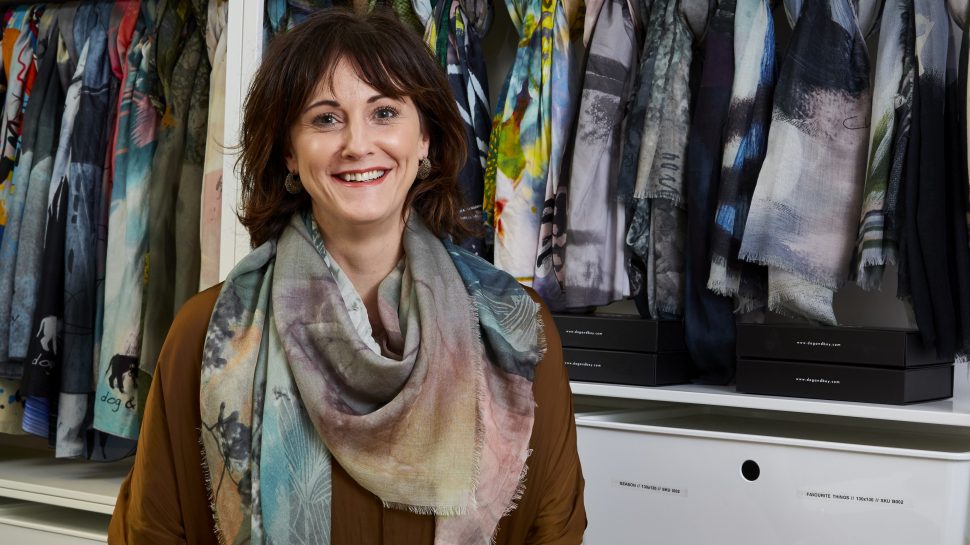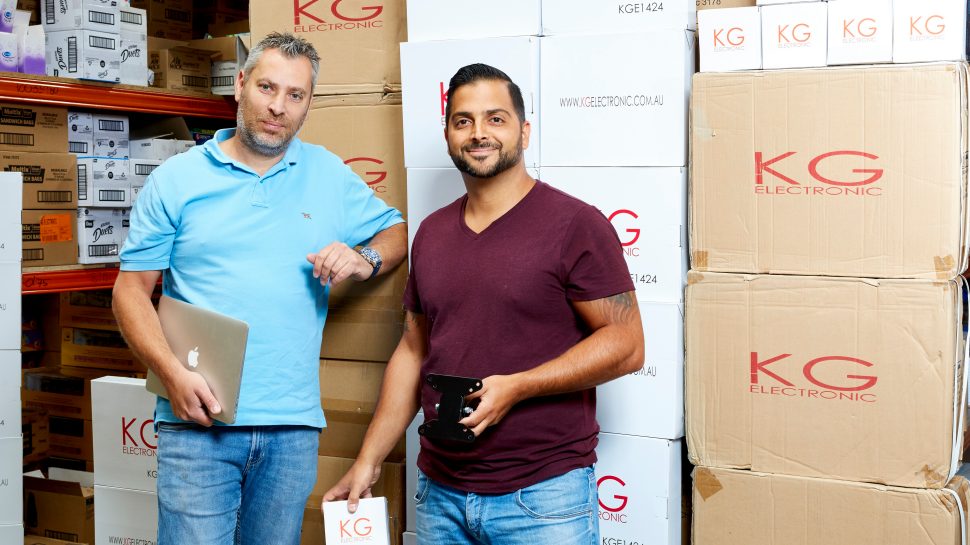The accidental scarf designer
Sonya Michele vowed she would never run a business. But then two things happened – a friend made a throwaway comment and she found her late mother’s sketchbook.

Entrepreneurship was never on the cards for Sonya Michele. Then one day, when she was yet again lamenting over the lack of long, oversized scarves for her height, a friend suggested she design her own. After initially scoffing at the idea, intrigue set in and Sonya dove into researching manufacturing processes and cost estimates.
“I’m an avid consumer of fashion but I didn’t know anything about manufacturing, wholesale or retail. I just knew what I liked. Once I understood the manufacturing side of things, I then had to figure out whether the financial estimates made sense for a self-funded business.”
It did, and Sonya launched dog&boy in January 2016 with a collection of 20 scarves.
“And then it was...crickets!” she says. “To be honest, I had no idea what would sell when I launched, which was both exciting and scary. I didn’t have benchmarks so everything was on a clean slate. That’s the exciting part. The scary part is wondering if it’s the right risk or opportunity for the business. I suppose it’s about having faith in what you’re doing.”
That same faith kept her from plunging into self-doubt after the launch. Instead, Sonya reassessed her marketing strategy and decided that what she lacked was more business connections. So she began exploring opportunities to showcase dog&boy in the most cost effective way.
“I started exhibiting at trade shows, reaching out to wholesalers on social media and knocking on stockists’ doors. The response was positive but more than that, it was a learning experience in terms of understanding my customer.”
Eight months later, she received her first international order from Singapore and soon after, a Chinese eCommerce marketplace offered to carry her limited edition scarves.
Today dog&boy has stockists in New Zealand and Singapore, and an international fan base.
Your designs draw inspiration from your late mother’s artwork. Could you tell us more about that?
Mum was always very creative and used to make beautiful cards for every occasion but I didn’t realise the extent of her artistic talent until after she passed away from brain cancer in 2015. She had a craft cave and as I was going through her things, I came across sketchbooks with gorgeous drawings of flowers. She was a great gardener. Magnolias were her favourite and they feature in every collection. Finding mum’s drawings crystalised our business philosophy of appreciating simple moments. We’re so busy chugging through the day that we don’t appreciate the everyday experiences.
What’s behind your brand name?
Again, it comes back to our philosophy. I have a young son and a large, cuddly chocolate Labrador. Everyone knows the adventures a dog and a boy can have and the mischief they can get up to. So the brand name is symbolic of that.
What makes your collections so unique?
Each collection consists of 10 to 12 new pieces, and I do a limited edition design of between 100 and 200 pieces in one colour wave rather than four different colour waves. The ideal scenario for me would be to produce different fabrics all year round to accommodate the northern and southern hemispheres. To bring out different fabrics at different times of the year.
Do you understand your customers well enough today to predict what designs would be a hit?
You’ll never know what people are going to like! Every fashion designer can attest to this. In fact, the designs that I wonder whether people will like have ended up being our bestsellers. But I’m getting better at responding to elements that have worked in previous collections and incorporating them into future ones.
Was selling to an international market always part of the business plan?
Yes. Australia will always be our home base but our vision from the start was to take the business global. Many international opportunities have come from investigating what works, whether our processes enable it, and the longevity within a certain market.
What did you discover works for an international market?
I learnt very early on that what sells at home won’t necessarily sell overseas so I make sure I know my international markets really well. China, especially, is vastly different to any other market in the world, and I had to learn how they shop and how to truly stand out over there.
What do you now understand about Chinese consumers?
They’re slowly moving beyond the mass market and high-street brands, and are looking for something different that doesn’t carry a designer price tag. And they’re way ahead in marketing and communication in terms of how they use WeChat and Key Opinion Leaders. I struggle enough in Australia to find influencers so how do I make that work in a country as big as China? It’s a work in progress.
How does your international sales volume compare to that of domestic sales?
Overseas sales take up about 10 per cent of the business at the moment,and we hope to double this in the next 12 months. I currently export to London, Canada, Hong Kong, Malaysia and the United States. My next goal is for sales volume in the United States to match those in the other countries by 2019.
What would your advice be to small businesses looking to sell internationally?
Make reliability and cost your top priorities. Every dog&boy parcel has a tracker because I need to know that the parcel will reach its destination once it has left Australian shores. My international contract with Australia Post includes volume discounts, which enables me to absorb the cost for standard shipping across the world. Both these factors make my customers very happy!

Meet customers’ delivery expectations
Let them choose where, when and how their parcels get delivered.
Get business stories, ideas and offers in your inbox each month.



